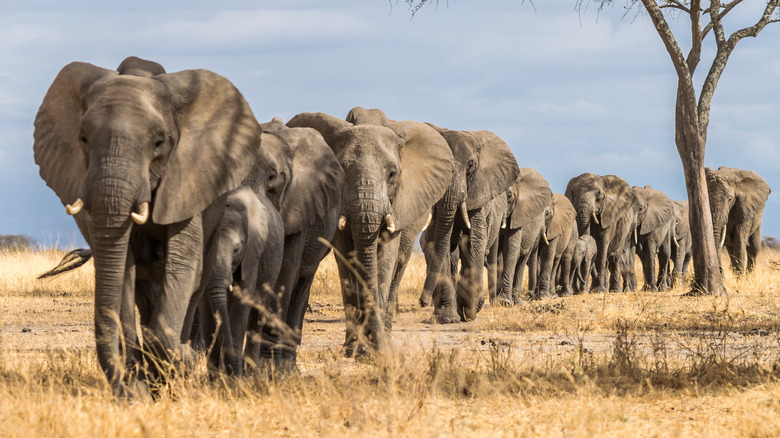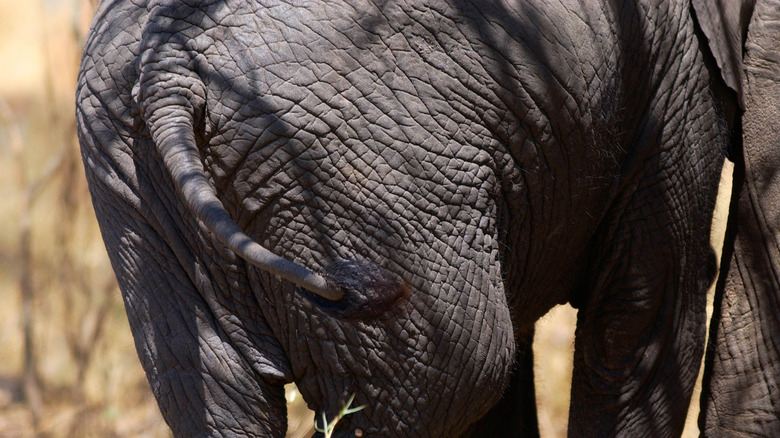An Elephant's Tail Looks Nothing Like You Think It Does
Elephants are more than just big bodies, floppy ears, and long trunks. Their tails might be the most interesting body part they possess.
The tail serves as a fly swatter, digging tool, steering device when herding across the plains, a propeller when guiding across water, and as a method of communication as well, all because babies have something to latch on to for guidance. A wagging tail, similar to that of a dog, can serve as a mood indicator for an elephant, expressing happiness or annoyance (via African Quest Safaris).
Certainly the trunk is indispensable, but think of the elephant's tail as a Swiss army knife of sorts. Elephants have some hair on them, but their tails are the only part which features luscious locks. That is because the tail serves as a hand for these creatures. It doubles up as a steering wheel, too.
Elephants typically cover themselves in mud in the dreariness of summer. It protect them from the sun, and also from flies. The tail is the rear windshield wiper and helps apply protection to the hard-to-reach spots. Additionally, the "steering wheel" feature allows for those in line, when connected from trunk-to-tail, to get a feel of the direction the herd is heading (via Hoedspruit Elephant Rehabilitation and Development).
The tale of the elephant tail
The elephant tail kind of looks like a large toothbrush, but according to HERD, it's more like a hand, even a fashion statement, in that it can help differentiate individuals within the herd and can help determine the age of the creature. Similar to how a child takes the hand of a parent to cross the street, so does a calf hold on to its parent's tail, to garner a sense of security and direction. Additionally, the parent can also manage a calf's playtime while keeping an eye on them, by holding onto its tail. The tail can also speak to the animal's body language, just as human gestures serve as a method of communication. When elevated, the tail can signify being playful, excited, or even fearful. The other end of the spectrum will find the tail constantly swatting flies, expressing annoyance.
These gentle giants can tell much about their pasts by the humanely-collected hairs from their tails. This method also helps in the conservation of the species. Scientific examination of the tail hair reveals the animal's comings-and-goings, dietary insights, and what environmental conditions they live in.
Either way you shake it, the elephant tail is truly a work of wonder, just one part of a majestic creature. Continuing to protect and conserve the species is vital, however, as they are unfortunately still being illegally hunted, mostly for their ivory tusks.

